Pro Tip
Each system type has slightly different maintenance needs. Be sure to check your system’s manual for tailored guidance!
Your home’s HVAC system is a sturdy companion through every temperature fluctuation, from that freak heat wave to that sudden snowstorm. But to keep things running smoothly in every season, sometimes your AC needs a little TLC.
In this guide, we’ll walk you through everything you need to know about heating and AC maintenance— because a well-maintained HVAC means fewer headaches, lower bills, and consistent comfort.
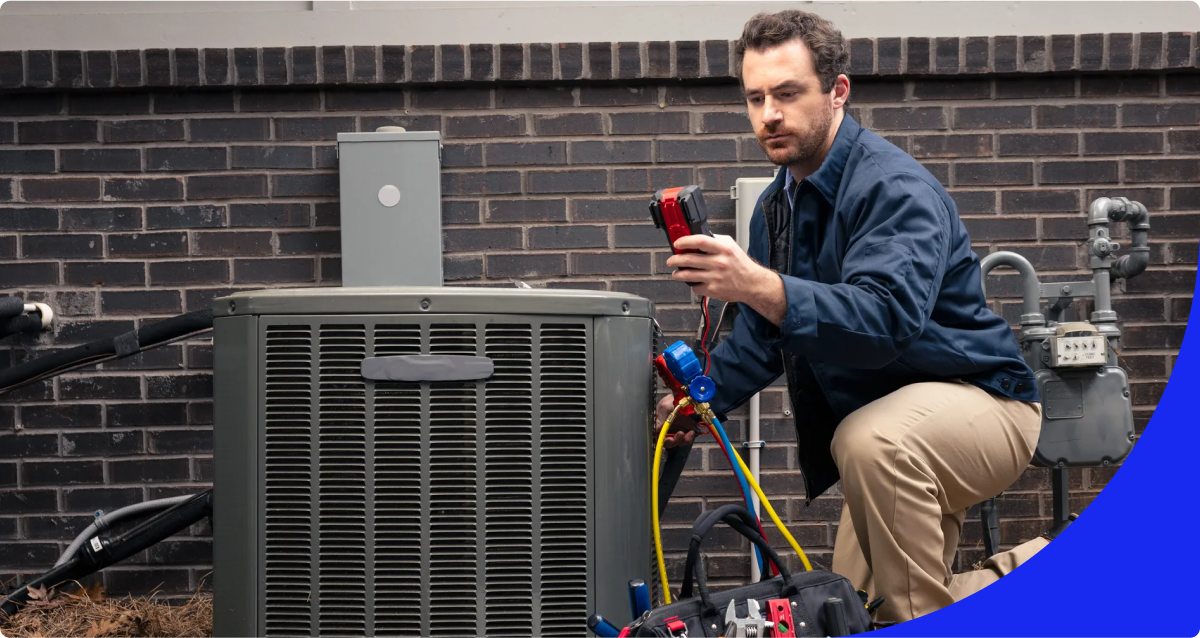
The first step of whole-house AC maintenance? Understanding how everything actually works. Let's break it down!
HVAC stands for Heating, Ventilation, and Air Conditioning. Essentially, it’s a network of systems and components that work together to control the temperature, airflow, and air quality in your home.
There are two main modes to your HVAC system— heating and cooling— and the two function a little differently.
In heating mode, your furnace or heat pump kicks into action. Furnaces burn fuel (like natural gas) to generate heat, which travels through a heat exchanger. A blower fan then circulates that warmth through your ductwork and into your home. Heat pumps work a little differently— they transfer heat from outside (yes, even in the winter!) into your home using refrigerant.
In cooling, it’s a misconception that an AC system "blows cold air.” Actually, it removes heat from your home and sends it outside. Here’s how: refrigerant absorbs heat from indoor air as it passes through the evaporator coils. Then, the compressor moves the refrigerant to the condenser coils outside, where the heat is released. Finally, the cooled refrigerant cycles back inside, and the blower fan pushes cool air through your home.
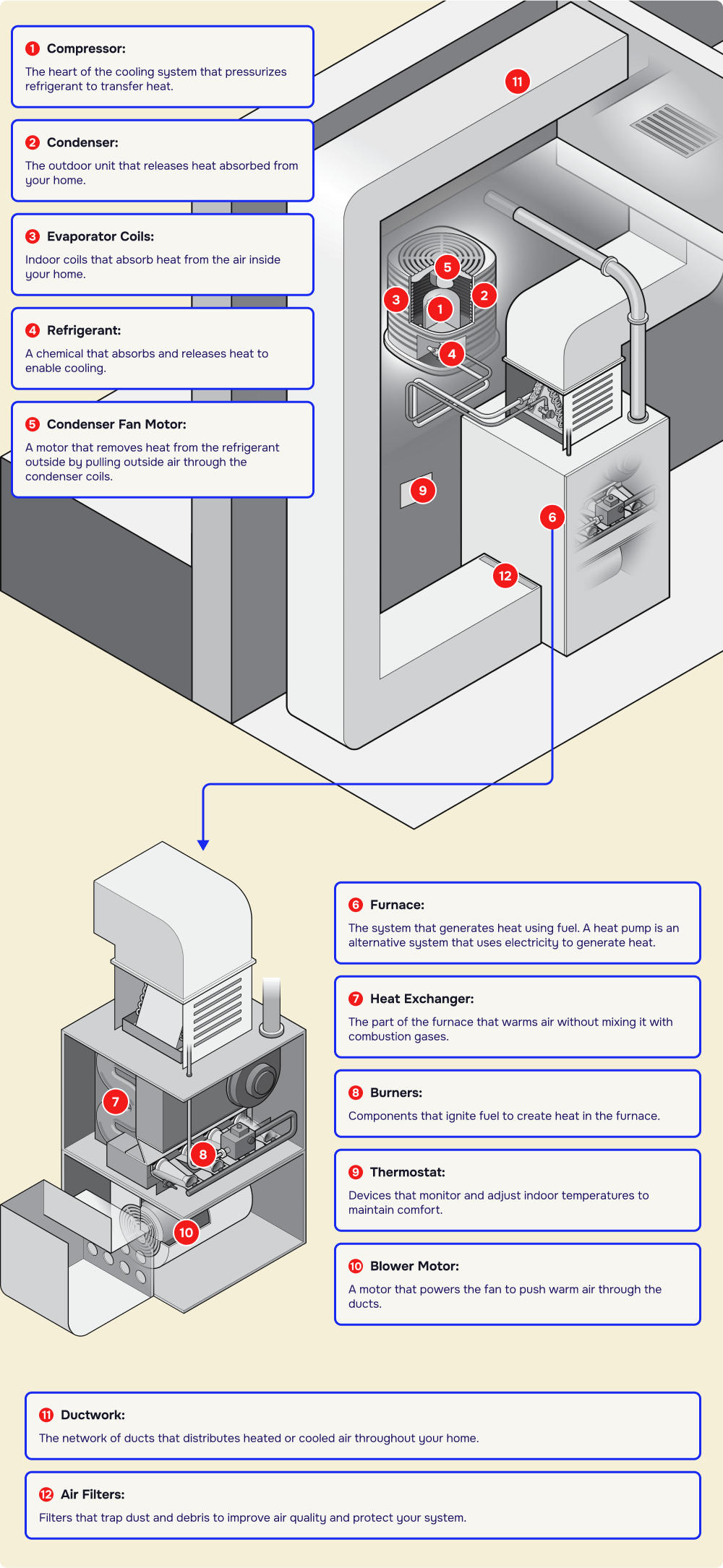
Not all HVAC systems are created equal! Depending on your home’s size, layout, and your budget, you might have one of the following:
This is the most common setup in American homes. A central air conditioner and furnace work together to heat and cool your home using shared ductwork to distribute air.
Perfect for homes without ductwork, these systems consist of an outdoor unit connected to indoor air handlers. They’re energy-efficient and allow for room-by-room temperature control.
Heat pumps are versatile systems that provide both heating and cooling by transferring heat instead of generating it. They’re ideal for mild climates but can also work well in colder regions with modern advancements.
These combine a traditional furnace with a heat pump, automatically switching between the two for maximum efficiency based on outdoor temperatures.
Smaller and more portable, window units are great for individual rooms or apartments but aren’t practical for whole-home cooling.

Each system type has slightly different maintenance needs. Be sure to check your system’s manual for tailored guidance!
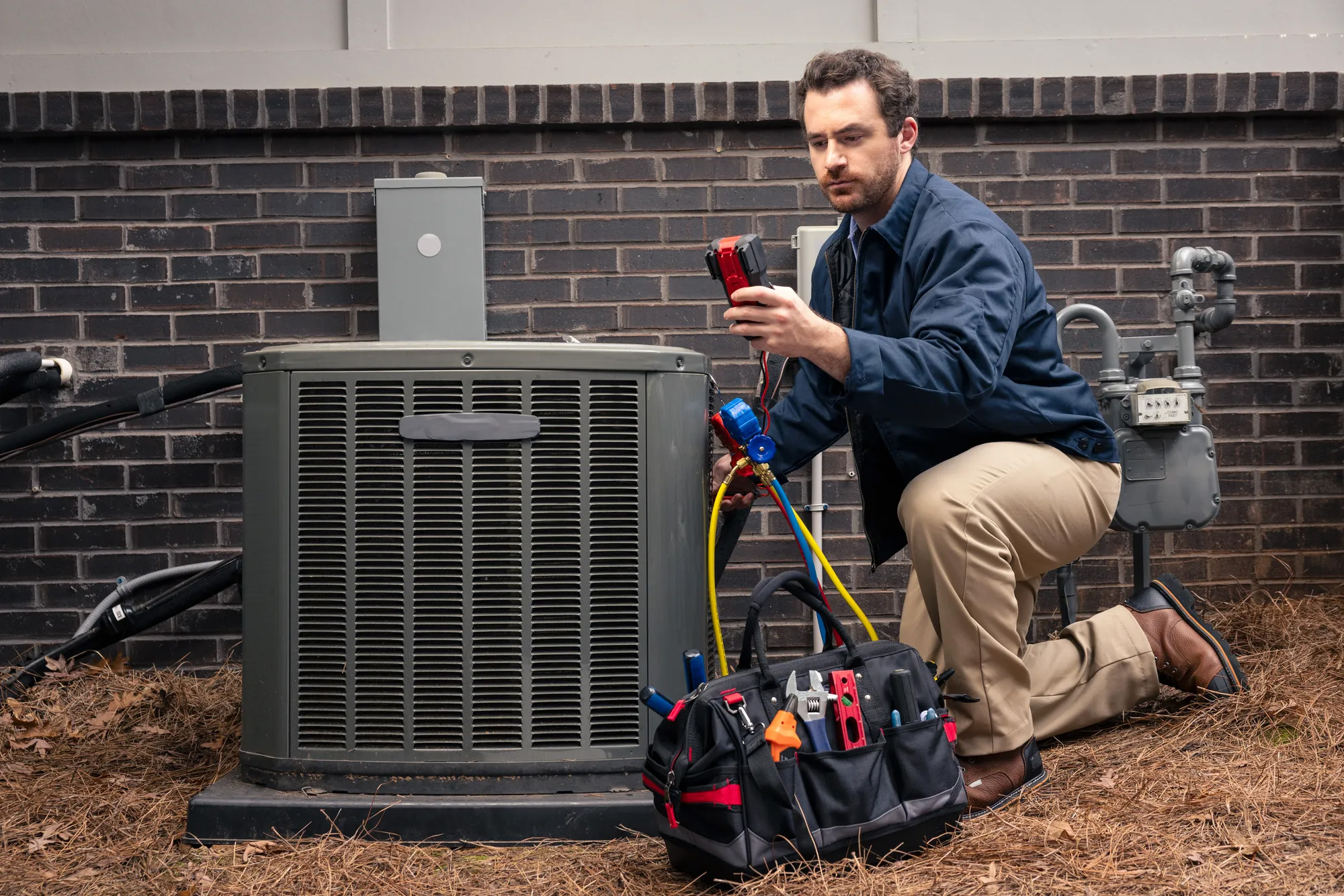
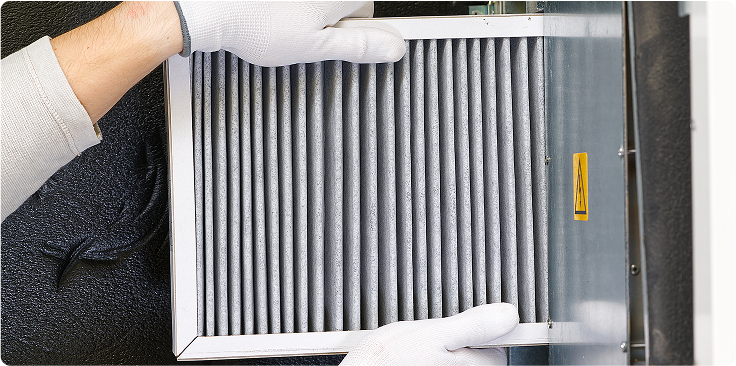
Although it’s a little less glamorous on the surface, your HVAC system is a lot like your car— it works hard every day and needs regular checkups to stay in peak condition. Neglecting furnace maintenance can lead to costly repairs, poor performance, and even system failure. Here’s why keeping up with HVAC maintenance is a must:
A clean and well-maintained system doesn’t have to work as hard to keep you comfortable. The average home spends $1,900 on energy bills annually, with half of that going to heating costs. Routine maintenance of your HVAC system greatly improves efficiency, saving you money on energy bills.
Want to avoid the headache (and expense) of replacing your HVAC system prematurely? A typical system has a lifespan of 10-15 years. Regular care keeps your system in excellent condition longer, helping you stay on the upper end of that stretch.
Dust, dirt, and allergens can build up in your system over time, circulating through your home and affecting your air quality. Maintenance keeps the air you breathe cleaner and healthier.
Many HVAC breakdowns are preventable with regular maintenance. The potential cost to repair or replace your heating system could be up to $5,600, while repairing or replacing your AC system could be up to $6,000. Spending a little time (or money) now on upkeep can save you thousands in unexpected repair bills down the line.*
*Repair/replacement cost is the eightieth percentile as reported in a nationwide survey of homeowners conducted in 2024 by CleaerVantage for American Home Shield.
There’s nothing worse than your AC quitting on the hottest day of summer or your furnace failing in the middle of a blizzard. Regular furnace maintenance reduces the chances of these stressful, inconvenient breakdowns.

Regular maintenance is the key to a long-lasting, efficient HVAC system. Follow this checklist to stay on top of monthly and seasonal tasks.
To keep your HVAC system in tip-top shape, you’ll need a few basic tools. These will make your DIY AC maintenance tasks quicker, easier, and more effective:
When your system seems to be chugging along smoothly, you’re not always worried about maintenance. But there’s a few tasks you should try to do every month:
Inspect and replace air filters:
Clean vents and registers:
Spring start-up checklist:
As the weather starts heating up, here’s how to approach booting up:
Turn off power:
Clean the outdoor AC unit:
Clear and clean coils:
Check condensate drain line for clogs:
Change dirty filters:
Vacuum blower motor:
Inspect ductwork:
Test the thermostat:
You need your AC to work hard in the summer. Here’s how to maximize its success:
Monitor system performance:
Adjust thermostat settings for efficiency:
As you begin the switch from cooling to heating systems, keep a few checks in mind:
Clean and cover the outdoor unit:
Check refrigerant levels:
Inspect furnace or heat pump:
Clean burners and replace filters:
Winter is coming, and it’s time to prep your heating system to face the chill:
Test heating system early:
Clean vents for obstructions:
Inspect carbon monoxide detectors:
Additional reading:
How to Conduct DIY HVAC Inspection
How to Clean Your Air Conditioner Condensate Drain Line

Need a little more guidance?
Download our free seasonal maintenance checklist today to stay on top of your AC assignments.
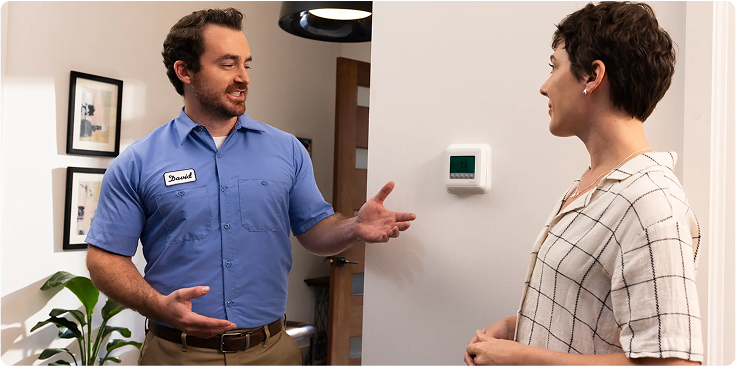
Even with the best care, things can sometimes go wrong with your HVAC system. Luckily, many common problems are easy to diagnose and fix. Here are some troubleshooting tips to help you get your system back up and running.
If you notice that your AC system seems frosty, humid, inefficient, or noisy, it might be a sign that something is up. This is how to troubleshoot some of your most common cooling conundrums:
High humidity levels:
Unusual noises:
If something about your home’s heat feels wrong, it probably is. These are some red flags to look out for and how to resolve them:
Insufficient heat:
Unusual smell:
Additional reading:
Frozen AC Unit AC Unit Blowing Warm Air
Bad Smells From Air Conditioner Air Conditioning Lung
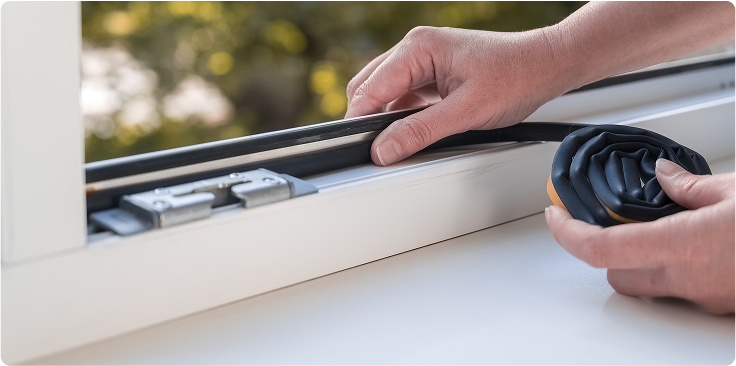
Want to reduce your energy bills while keeping your home comfortable? Your HVAC system plays a big role in overall energy consumption, so using it wisely can lead to significant savings. Here are some energy-efficient tips to optimize your system’s performance:
Program your thermostat to adjust temperatures when you’re not at home or while you’re sleeping. Smart thermostats are inexpensive to install and seamlessly optimize energy use, helping you save about $50-$100 a year on average.
Gaps around windows and doors let hot or cold air escape, forcing your HVAC system to work harder. Seal leaks with weatherstripping or caulk to keep the air where it belongs.
Insulation helps maintain consistent indoor temperatures by reducing heat loss in the winter and keeping cool air inside in the summer. Make sure your attic, walls, and floors are properly insulated to improve efficiency.
Ceiling fans can help circulate air, making it feel cooler in the summer and more comfortable in the winter. Use fans in conjunction with your HVAC system to improve efficiency.
In the summer, place a shade over your outdoor AC unit (but don’t block airflow). This helps the unit operate more efficiently by reducing the heat it absorbs from the sun. Just be sure you’re not obstructing the airflow around the unit.
A well-maintained system operates more efficiently. Follow the manufacturer’s guidelines for maintenance and scheduling tune-ups to ensure peak performance throughout the year.
Even with regular maintenance, all HVAC systems have a lifespan. But how do you know when it’s time to replace your system? Here are some signs that it might be time for an upgrade:
If you find yourself calling for repairs every season, it may be time to consider a new system. Ongoing repairs can add up, and at a certain point, it’s more cost-effective to invest in a replacement.
Most HVAC systems last between 10–15 years. If yours is approaching or surpassing this age, it’s worth evaluating its efficiency and reliability. Older systems may also lack modern energy-saving features.
If your system is constantly running up your energy bills, even after a tune-up, it could be an indication that it’s not performing as efficiently as it once did. Modern HVAC systems are much more energy-efficient, and upgrading could result in significant savings over time.
Older AC systems use R-22 refrigerant, which is being phased out due to environmental concerns. If your system requires R-22 and leaks, it will steadily become more difficult and expensive to repair over time as refrigerant supply dwindles. Upgrading to a system that uses a more eco-friendly refrigerant can save you headaches and future costs.
If your system isn’t keeping your home comfortable or the temperature is uneven across different rooms, it could be a sign that your HVAC system is no longer capable of meeting your needs. A replacement might be necessary to regain consistent comfort throughout your home.
Additional reading:
When to Replace your Air Conditioner HVAC Replacement Costs
Tips for Buying a New AC Unit
Unexpected HVAC breakdowns can be frustrating, costly, and stressful. But with American Home Shield, you’ll get peace of mind knowing that you have a safety net for those unforeseen repair needs. With American Home Shield coverage and service offerings, keeping your HVAC system in top shape is hassle-free.
American Home Shield home warranty plans offer repair and replacement coverage for major components of your HVAC system, including:
As much as we love DIY house AC maintenance, there are times when you should leave it to the Pros. Thanks to AHS member benefits, you never have to tackle HVAC maintenance alone. With select plans, members get:
*HVAC system tune-ups are offered by Frontdoor Pro and performed by a FrontdoorPro® independent service contractor. For Frontdoor Pro license numbers, please visit Frontdoor Pro Licensing Information. HVAC service dates are limited and may vary based on location.
Additional reading:
Home Warranty for an AC Unit
Is AC Ductwork Covered by a Home Warranty
When to Book an Air Conditioning Service Appointment
HVAC Service Requests and Upgrade Program
AHS assumes no responsibility, and specifically disclaims all liability, for your use of any and all information contained herein.
Have a plan for your home when things don't go according to plan
Shop Home WarrantiesStaging